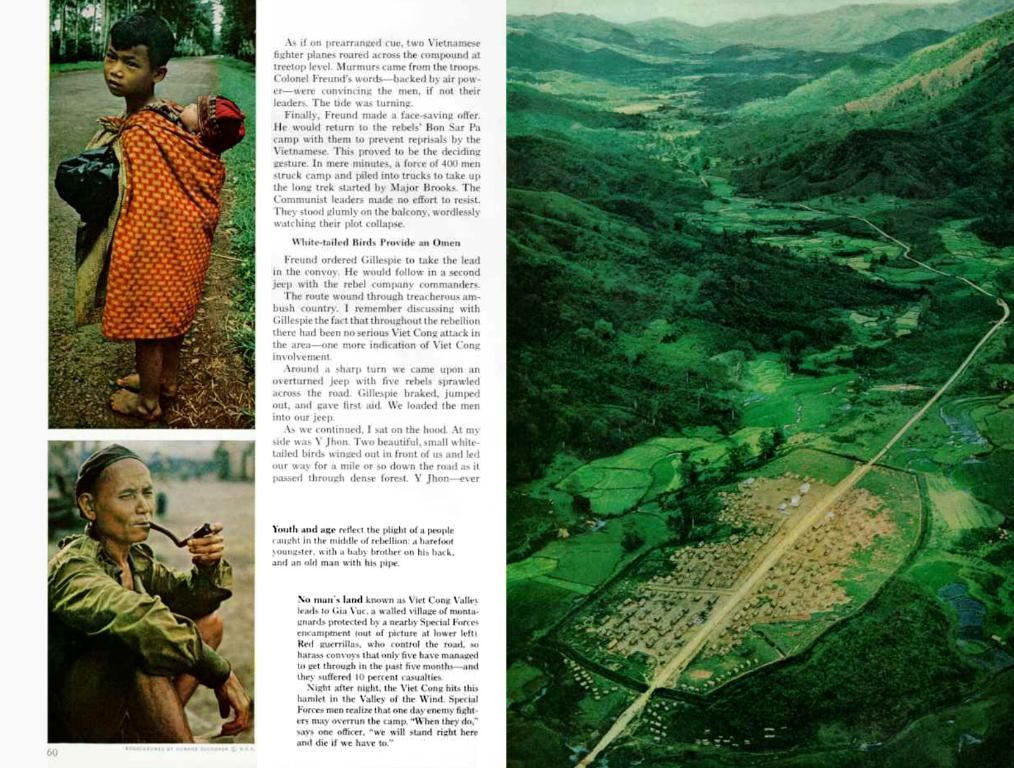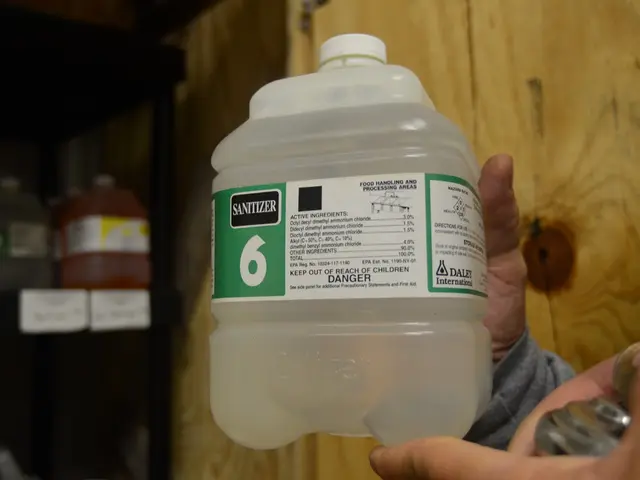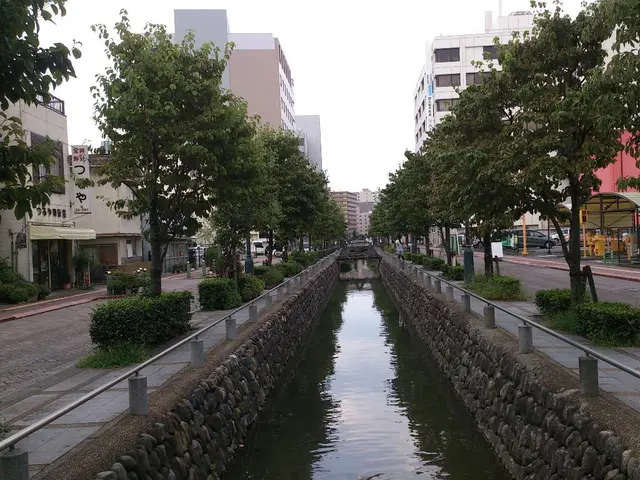Searing Temperatures in Mannheim versus Pleasant Climate in Hattingen
Sizzling Hot Cities: German Heatwave Hotspots Unveiled
Berlin (dpa) - Identify your urban bubble carefully, because over 12 million Germans could be sweltering in sweltering heat this summer, according to a new study by the Environmental Aid Germany (DUH). To create their Heat Affectedness Index, DUH has scrutinized the sizzling summer hotspots where sun-soaked landscapes, council blocks, and meager greenery lurk together in 190 sprawling metropolitan areas with a population of more than 50,000 inhabitants.
Paving Paradise & Parking in the Heat
Heat peaks most prevalently in the dacey, sunbaked southerly German towns. Topping the ignominious chart, Mannheim, Ludwigshafen, and Worms swelter under the stifling weight of an 88 to 91 percent heat index—duct tape on a thermometer, claiming these German locales as our country's infernal heart[2].
Cities farther north like Flensburg, Wilhelmshaven, and Kiel boast cooler moving weather patterns, but Hattingen, Gummersbach, and Witten rule the roost with their verdant expanses and limited concrete planes—parks, trees, and rooftops aplenty[3]. Scorching weather doesn't discriminate, but it does seem to strike a blow against socially disadvantaged areas most frequently[4]. Here, folks frequently nestle into small, sunbaked territories with few trees—think inner-city estates of line after line of houses.
DUH has classified 31 cities with a "red card," highlighting their heat vulnerability. Notable red-card recipients include Frankfurt am Main and Magdeburg. Additional 131 cities are mustered into the third rank, goldfinches and Dalmatians of Germany, including Cologne, Berlin, and Munich. A merry 28 cities have earned the "green badge," harboring a measure of shade and relief amidst the fiery sun glare, such as Hamburg[5].
Scorching City Science: Heat Affectedness Index
Teaming up with Luftbild Umwelt Planung GmbH, DUH divided Germany into a patchwork of 100 x 100-meter squares. Studies were carried out on each square, focusing on surface temperatures during summertime, degree of concrete encasement, greenery within immediate proximity, and population density[5]. On parched, asphalt-coated areas like roadways, parking lots, and roofs, vital water molecules vaporize instantly, causing heat absorption and prolonged release. This ongoing heat exchange builds up excessive urban warmth, especially in our concrete and pillared playgrounds[5].
On the opposite end of the spectrum, exuberant green foliage revitalizes by means of evaporation, plunging temperatures, and softening the scorched city ambiance. Even the toasty concrete can be transformed by clever Urbanscape design, courtesy of "spongy cities" that prioritize water retention and seepage to ease the city through rainy days as well as dry spells. Intricate green roof and façade layouts, vibrant parks, and tree-lined streets encourage evaporation and similar temperature alleviation strategies[5].
From Drowsy Summer Afternoons to Cultivated Cool
"Eco-friendly jungle gym construction no longer takes a backseat to residential development or public infrastructure in our eyes," exclaims Barbara Metz, a DUH representative. "We demand binding minimum green space requirements on every plot, structure, and public space," she persists. Such compulsory legal framework would be a deviation from the current approach, yet it could herald a more verdant, ambient future. By requiring local municipality governments to support and incentivize urban green projects financially, developers would embrace a new, eminently cool aesthetic for urban centers across the nation[3].
Habitat & Health in the Age of Global Warming
Germany has already seen its temperatures rise by 2.5 degrees compared to pre-industrial times, with the German Meteorological Service estimating that roughly 3,000 heat-related casualties occurred each in 2023 and 2024. The eldest citizens often feel the brunt of extreme heat. Seek relief by quenching your thirst, shifting physical exertion to cooler times of the day—remember, the early bird catches the worm—and indulge in invigorating showers or foot baths[3].
With all this humidity, your favorite Urbanscape helper is switching gears, making a dash to the sun-soaked heartlands of merry, lush Mother Earth. Drawing upon the colorful palette of shapes, textures, and aromas of the natural world, it will refresh our collective urban environment in unique ways unseen since time immemorial[6]. Tune in for future updates as we explore the gardens of inspiration, sowing seeds in the furrows of imperfect urban spaces in the spirit of preservation and creation—sooner than you think, the new era is nigh!
[1] Enrichment data: https://www.duh.de/pressetext/pressemitteilung-uber-hitzebelastung-in-deutschen-staedten/[2] Enrichment data: https://assenbaumele.de/blog/artikel-erster-hitzeindex-fuer-deutschland/[3] Enrichment data: https://www.kommunen-2030.de/nachhaltige-entwicklung/stadt-junge-klimapflege/klimaschutz-gegen-hitzeinduzierte-sonnengesundheit/[4] Enrichment data: https://dkbmai.de/themen/hitzeinsel-indikatoren/[5] Enrichment data: https://www.dwd.de/DE/home/home_node.html[6] Enrichment data: https://www.duh.de/media/filer_public/2021/05/20/tubman-roof-top-garden-geving-an-europa-um-denk-mal-von-grne-staden-20210520-163101.jpg
- In the context of Germany's heatwave hotspots, it's crucial to consider the role of environmental science and climate change in urban planning, as greenery within immediate proximity can significantly reduce urban warmth and alleviate heat-related health issues, as discussed in the Scorching City Science: Heat Affectedness Index section.
- Furthermore, the health-and-wellness implications of urban heat islands, particularly affecting socially disadvantaged areas with fewer trees, underscore the importance of science and environmental-science in ensuring a livable city landscape that is resilient to climate change, a point emphasized in the Scorching City Science: Heat Affectedness Index and Habitat & Health in the Age of Global Warming sections.








